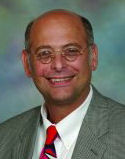Quincke's legacy
A nineteenth-century physician described angioedema, invented diagnostic lumbar puncture and described a sign of aortic insufficiency, but was still rejected for a Nobel Prize.
The first patient lay on her side in bed moaning and rocking, her head held in her hands. Her vision was doubled and a horrible ringing was in her ears as she leaned over and filled the enamel emesis basin for the third time. In the room next door, another patient also had a severe headache, accompanied by a high fever and stiff neck. Down the hall, a man was struggling to breathe. He presented with puffy lips, like his father always got, but his lips were double in size and his throat felt like it was going to close up. He wheezed for help.
Finally, a fourth patient, whose symptoms we will describe later, sat in his room surrounded by 10 doctors, all of whom were edging closer, stethoscopes and probing fingers at the ready for a chance to see, hear and feel such an interesting case. (The patient wished they were somewhat less interested). What do these four patients have in common?

To find out, the clinicians caring for the first two patients, with pseudotumor cerebri and meningitis, respectively, might need to rely on a diagnostic tool developed by Heinrich Quincke: the lumbar puncture.
Heinrich Quincke, the youngest of four sons, was born in 1842 in Frankfurt, Germany, to Hermann Quincke, a prominent physician. Heinrich grew up in Berlin and subsequently attended the University of Heidelberg, starting medical school at age 16 and graduating at age 21.
As a young doctor, Quincke injected red sulphide into the spinal canals of dogs and then traced its course. He first applied this knowledge to patients suffering from hydrocephalus. With the use of a stylet, he placed a 1.1-mm needle through L3/L4 interspaces and withdrew spinal fluid. He also conducted pressure measurements before and after the procedure. Most neurologists in Great Britain and Germany described this method as dangerous. Indeed, even Alois Alzheimer opposed the idea. In the National Hospital in Queen Square, London, the neurologist William Gowers banned the use of lumbar puncture entirely.
Eventually, though, the utility of the lumbar puncture became obvious and its popularity grew. Quincke used it to describe low sugar levels in bacterial meningitis and the presence of bacilli in tuberculous meningitis. By the turn of the 20th century, the lumbar puncture became widely used. Even today, you can still wield a Quincke spinal needle.
The third patient described above had a swollen tongue and lips. Although you would most often see and attribute this to a reaction to angiotensin-converting enzyme inhibitors, the patient had Quincke's syndrome. In 1882, Quincke described the edematous swelling of the skin and subcutaneous tissue, noting irregular intervals of recurrence but generally in the same region. Today we recognize C1-inhibitor deficiency, the autosomal dominant hereditary angioedema. Usually a quantitative rather than a qualitative disorder, it can be treated with C1-inhibitor extract or fresh frozen plasma. Unfortunately, Quincke had little to offer patients with this disorder other than dietary prevention, rest, foot baths and cathartics.
The final patient described above had aortic insufficiency. The doctors grouped around him were all vying to display their “signs.” There is Gerhard's sign, a systolic pulsation of the spleen; Becker's sign, the visible pulsation of the retinal arteries; de Musset's sign, the head bob with each heartbeat; Rosenbach's sign, the systolic pulsation of the liver; and Müller's sign, a pulsing of the uvula. Quincke, too, has a sign: the capillary pulsation of the fingertips or lips.
Quincke was nominated for the 1909 Nobel Prize for his work, but the nomination was rejected because he was considered too old at the age of 76. (Of interest, Joseph Babinski was also deemed too old to be awarded the Nobel Prize.) It was only in 1966 that the age barrier was broken when Peyton Rous, at the age of 87, received a Nobel Prize for work on tumor-inducing viruses.
Heinrich Quincke described angioedema, invented the diagnostic lumbar puncture, and described a sign of aortic insufficiency. It is humbling to consider that a physician who contributed so much is so little known. Some days you feel lucky just hearing the regurgitant murmur, recognizing that swollen lips aren't normal, and celebrating when a few precious drops of cerebrospinal fluid leak into a collection tube—let alone being the first person to ascertain the significance of all three.



